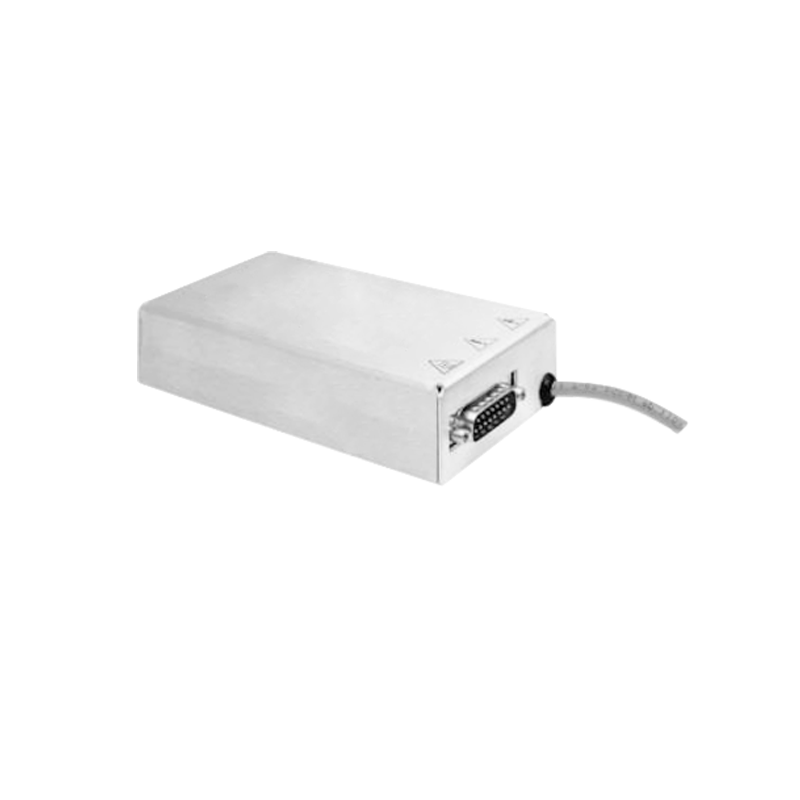Application Scenarios of Plasma High-Voltage Power Supply
As a core device that ionizes gases into plasma through high-voltage excitation, plasma high-voltage power supply has deeply penetrated into multiple high-tech fields. By precisely regulating electric field strength, frequency, and waveform, such power supplies induce ionization and excitation in gas media under high voltage, forming plasma containing active particles (electrons, ions, free radicals) for material modification, decomposition, or energy conversion. The following professionally analyzes its typical application scenarios and technical characteristics.
1. Precision Processing in Semiconductor and Microelectronics Manufacturing
In semiconductor wafer fabrication, plasma high-voltage power supplies serve as the core of dry etching processes. By applying high-frequency high-voltage electric fields (typically 13.56MHz), gases like CF₄ or Cl₂ are ionized into plasma, enabling nanometer-scale etching patterns on wafers through synergistic ion bombardment and chemical reactions. For instance, in FinFET device manufacturing, the power supply regulates plasma ion energy and direction to ensure the verticality and surface roughness of fin structures meet the requirements of sub-7nm processes. In plasma-enhanced chemical vapor deposition (PECVD), the power supply excites SiH₄ and NH₃ to form SiN films for chip passivation layers, with deposition rate and uniformity relying on power stability (fluctuation ≤1%).
2. Efficient Pollutant Degradation in Environmental Protection
In industrial waste gas treatment, corona discharge driven by plasma high-voltage power supplies efficiently decomposes VOCs. When non-equilibrium plasma is generated between needle-plate electrodes by high voltage, high-energy electrons (3-10eV) collide with O₂ and H₂O to produce ·OH and ·O radicals, breaking down benzene compounds and dioxins into CO₂ and H₂O. A chemical park case shows that pulsed high-voltage power supplies (80-120kV peak voltage, 50-100ns pulse width) achieve ≥95% degradation efficiency for benzene-containing废气, with 30% lower energy consumption than traditional catalytic combustion. In wastewater treatment, plasma electrochemical technology driven by high-voltage power supplies generates O₃ and ·OH to mineralize refractory organics (e.g., antibiotics, dyes), with COD removal rates typically reaching 60%-80%.
3. Surface Modification in Medical and Biological Materials
In biomedicine, low-temperature plasma treatment uses high-frequency high-voltage power supplies (1-30MHz) to excite Ar/O₂ mixtures, introducing polar groups (hydroxyl, carboxyl) to enhance biocompatibility. For example, titanium alloy orthopedic implants treated by plasma reduce contact angle from 85° to <30°, increasing osteoblast adhesion by 4 times. Plasma scalpels use micro-plasma (≤40℃) generated by high-voltage power supplies at electrode tips for simultaneous tissue cutting and coagulation, with thermal damage depth of only 100-200μm—significantly reducing postoperative infection risks compared to traditional electrocautery. In medical catheter surface treatment, plasma graft polymerization (50-100W power) forms antibacterial coatings (e.g., Ag+-containing layers) with 99%+ bacteriostatic rate.
4. Cutting-Edge Applications in New Energy and Aerospace
In new energy, plasma high-voltage power supplies activate fuel cell catalysts. Pulsed high voltage (10-20kV) treatment of Pt/C catalysts increases active site density, elevating the onset potential of oxygen reduction reaction (ORR) by 50mV and power density by 15%. In aerospace, plasma flow control technology uses plasma jets generated by high-voltage power supplies on wing surfaces to actively regulate boundary layer separation, reducing flight drag. A wind tunnel experiment shows that nanosecond-pulsed high-voltage power supplies (30kV, 1kHz) delay the stall angle of NACA0012 airfoils by 3° and increase the lift-drag ratio by 12%. Additionally, plasma-assisted combustion excites fuel-air mixtures via high-voltage power supplies, stabilizing combustion under lean conditions and improving aeroengine fuel efficiency by 8%-10%.
5. Other Emerging Applications
In nanomaterial synthesis, magnetron sputtering driven by plasma high-voltage power supplies enables uniform deposition of metal nanoparticles, such as transparent conductive films (sheet resistance ≤10Ω/□) on flexible substrates. In agriculture, low-temperature plasma treatment (20kHz frequency, 0.5W/cm² power density) breaks down seed coat wax layers to promote water absorption, increasing corn seed germination rates by 20%. In food packaging, plasma treatment enhances polymer film barrier properties, reducing oxygen permeability by 70% and extending fresh food shelf life.
Conclusion
Innovations in plasma high-voltage power supply applications always center on precise plasma property regulation, with technological evolution trending toward high frequency, intelligence, and integration. With the popularization of wide-bandgap semiconductor devices (e.g., SiC, GaN), the conversion efficiency of high-voltage power supplies is expected to increase from 85% to >95%, further expanding applications in extreme environments (deep space exploration, deep-sea development).




















